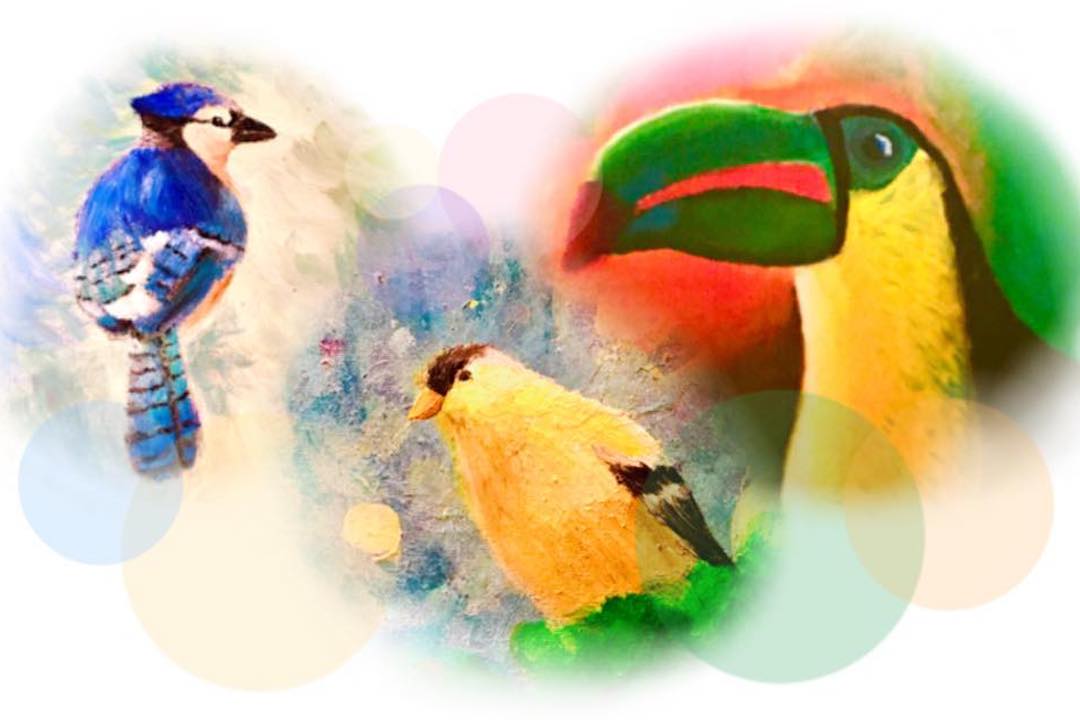A flock of clay birds flew into Toronto’s Gardiner Museum this summer.
Forever (Bird-Botanicals), an exhibition by artist David Constantino Salazar, ran between August 21 to August 31. His sculptural installation was made up of over 500 individually hand-sculpted birds produced in red clay, which were then smashed and torn apart in splatters against the gallery’s wall, with sculpted plants growing out of their bodies.
The Varsity spoke to Salazar about his inspiration, his artwork’s symbolism, and how to be resilient when faced with trauma.
Birds representing transformation
In July 2021, Salazar led a series of online workshops, which I was fortunate to take part in. Participants were given a bag of red clay, and were guided on how to create birds with rudimentary shapes. We were then brought to the museum to be included as part of the exhibition.
The birds carved by Salazar were mounted on the walls of the gallery; the birds without wings sat on its floor. The contrast reflects the different stages of existence we experience when recovering from injury and collective trauma. In an interview with The Varsity, Salazar explained his interest in exploring life post-trauma. “Because we don’t die, we must go on. Some of us take a while. Some of us stay. I personally have chosen to move on — to move forward from trauma.”
Salazar’s birds were not only metamorphosing individually, but together they became another entity, creating a new force. Salazar told The Varsity, “It’s important for me to be able to communicate a bird, but it doesn’t have to be anatomically correct. I’m not faithful to the idea that it has to be a particular type of bird… the narrative I’m trying to have with the audience is what do birds symbolically mean to us.”
Salazar believes that the deformation of clay birds from their organic shape is part of their story, similar to real life. When a living bird collides with a surface, it adapts to the geometric form of that surface. The changed shape of a bird that has collided with a surface represents how our experiences shape who we are and how we present ourselves.
Salazar emphasized the inevitability of change as a theme of the exhibit. “It’s letting go. It’s a meditation of impermanence… nothing lasts forever, and we are constantly on this shift… we are constantly changing,” he said. Although birds undergo physical, mental, and spiritual trauma, they sustain their beauty through the uniqueness of their shapes and experiences.
Taking inspiration
Salazar’s idea of ‘forever’ manifests through the cycle of energy in nature, where the death of one body serves as fuel and nutrient for the growth of another body. The idea developed when Salazar visited South America and saw animals feeding on rotten trees. The rotten trees left the canopy open, providing access to sunlight for other plants.
The trees’ destruction demonstrated trauma as a force for positive change, a concept which Salazar connected to human experience. “Well, how about [us]? How is it that we process traumatic experiences… and continue to grow from there? We’re not the same, but yet we continue to process… It’s forever.”
Salazar took inspiration from the red clay he saw on his travels. The material reflects the historical context of colonial architecture in Latin America, where red clay is often used in construction. “There’s so much power within this medium that is subconscious in our being, our cultural makeup,” the artist explained.
Though he didn’t use red clay in his exhibit, Salazar hand-modelled each bird sculpture to mimic its appearance and symbolism. “When the clay dries, it tears differently, and it gets grainy. I like that, because that’s violence right there. That’s like a whole piece coming apart,” he told The Varsity.
Mental health and human resilience
In Forever (Bird-Botanicals), Salazar collaborated with Workman Arts, an art organization that promotes awareness about mental health and addiction.
Via Salazar, the Gardiner Museum offered artistic workshops to the public. In these workshops, visitors made birds, took their artwork home, and then donated it to the museum. The way that participants gave back to the space where they explored their personal grief showed that using trauma to enact positive change is not only present within Salazar’s work, but within the spaces he presents it in.
Through his work, Salazar invites his viewers to think about the power of human resilience — when the stability in our lives comes to an end, how do we process it, evolve, and move forward?
The answer, Salazar proposed, is to look up to the sky: as we reflect on the adaptability of birds, we may just come to realize our own resilience.


